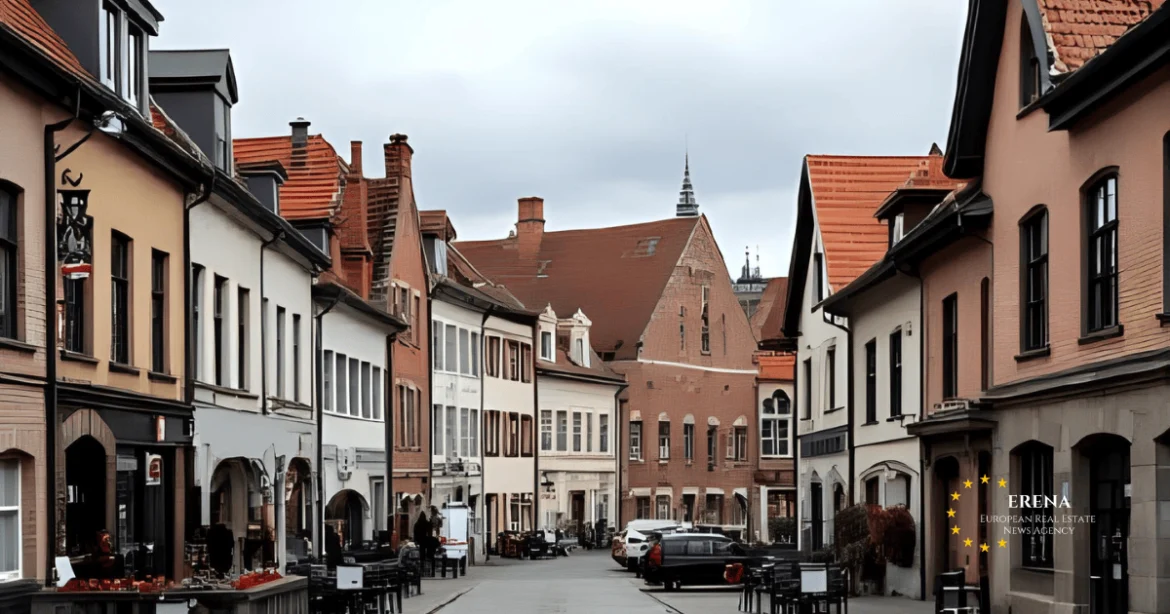Schwedt (Oder), a border city in Brandenburg, is emerging in 2025 as one of Germany’s most affordable property markets. With apartments priced at €2,000–2,700 per m² and single-family homes averaging €2,000–2,600 per m², Schwedt offers buyers an entry point far below Berlin, where prices exceed €4,800 per m². Rental demand remains firm, creating opportunities for both families and investors.
Affordable Prices Compared to Berlin
Data from leading property portals highlights the city’s pricing advantage. Apartments are typically listed between €1,990 and €2,700 per m², while houses average around €2,200 per m², depending on size and condition. A detached home with a garden can often be purchased for €170,000–250,000, less than half the cost of a Berlin flat.
On the rental side, the Mietspiegel 2025 shows average cold rents of €7–9 per m², with €7.2 per m² as the citywide mean. At these levels, landlords achieve 3–4 percent gross yields, a healthy margin by German standards.
Vacancy and Population Trends
The days of high vacancy are over. Schwedt’s cooperative housing provider WOBAG reports only 2 percent vacancy, with up to 200 registered seekers waiting for flats. Online listings confirm the squeeze: in August 2025, only around 40 houses were available on major portals.
Population decline, long a concern, has stabilized at about 33,700 residents. Migration flows—from Polish commuters, Berlin families in search of affordable housing, and recent refugee arrivals—are helping sustain demand.
The Refinery Factor
Schwedt’s economy is still tied to the PCK refinery, one of the largest industrial employers in eastern Germany. In June 2025, the federal government extended job guarantees until year-end, calling it a “reliable signal for employees.” This announcement reassured the housing market, though long-term questions about ownership and energy transition remain unresolved.
Infrastructure and Connectivity
Rail connections link Schwedt to Berlin via the RE3 line, with travel times of 80–90 minutes. Services remain limited to hourly or bi-hourly intervals. A timetable change in December 2025 is expected to improve links through Angermünde, but the city still lags behind suburban Berlin in frequency and convenience. Road connections are solid, and cycling routes along the Oder add lifestyle value, especially for families and remote workers.
Who Is Buying
Two groups dominate Schwedt’s property market:
- Investors target multi-family blocks priced between €350,000 and €700,000. Built largely during the GDR era, these units need modernization—insulation, heating, and façade upgrades—but subsidies from KfW and Brandenburg’s ILB make projects financially viable.
- Owner-occupiers focus on detached houses under €300,000, particularly those with gardens and parking. Historic villas and older homes priced at €120,000–180,000 attract buyers willing to renovate for long-term value.
Opportunities and Challenges
Opportunities
- Entry prices far below Berlin and national averages
- Stable rental demand and low vacancy
- Government-backed renovation subsidies
- Strong potential for appreciation after modernization
Challenges
- Dependence on a single major employer
- Ageing housing stock requiring substantial investment
- Rail service that remains limited
- Few new construction projects in the pipeline
Outlook
Schwedt offers something increasingly rare in Germany’s housing market: affordable entry prices with strong demand. For households, it provides a path to homeownership still within reach. For investors, gross yields of 3–4 percent combined with modernization potential create a compelling case. Yet risks remain, particularly the city’s reliance on the refinery and its ageing stock.
In 2025, Schwedt stands out as both an affordable alternative and a market with structural challenges. For those willing to take a long-term view, the city offers one of Brandenburg’s last real opportunities for value-driven property investment.

